Wisconsin Nitrate Film Project
In conjunction with the accelerated aging trial, the history and conservation group conducted a visual inspection project. We sought to determine whether there are correlations between the chemical behavior of the film, as indicated by the results of our chemical analyses, and what we can see and measure on the film stock with the naked eye and simple tools. We hypothesized that such correlations would allow archivists and conservators to determine the stability of their nitrate holdings using tools readily available to them and techniques that do not require sophisticated knowledge of chemistry or destructive testing.
We utilized two methods:
- A visual inspection process devised by the history and conservation group
- Reflectance Transformation Imaging (RTI)
Unfortunately, we were unable to make any quantitative connections between what we could observe visually using these two methods and the results of our quantitative chemical analysis. Thus we do not believe that either process would be useful to archivists and conservators in ascertaining the stability of or the potential fire risk associated with their nitrate holdings.
However, we do believe that it is worth continuing to investigate whether there are tools and methods readily available to archives and other repositories that could be used to discern connections between nitrate film’s appearance and its chemical condition. For that reason, we illustrate both methods of visual inspection below.
Visual Inspection
The history and conservation group performed a visual inspection only on the film samples used in the accelerated aging trial, and not on the samples that were subjected to other physicochemical tests (described on the following page of this website). The condition of each sample frame was documented on a scoring sheet that we developed. A blank inspection sheet can be seen here, while representative completed inspection sheets can be seen here. All the frames were also scanned in order to establish a good visual record of their appearance, as shown below.
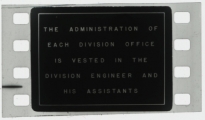
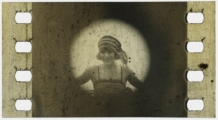
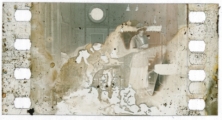
This brief video, narrated by Amanda McQueen, the primary research assistant for the history and conservation group, demonstrates the visual inspection process. The process is also described below.
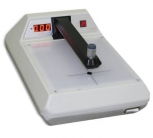
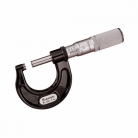 The first step in the visual inspection process was to measure the image density of each frame using a densitometer. We measured the lightest and darkest portion of the image, and also recorded the density of the emulsion–free area around the sprocket holes. This could help us quantify both the fading and decay of the image, as well as the yellowing of the base.
The first step in the visual inspection process was to measure the image density of each frame using a densitometer. We measured the lightest and darkest portion of the image, and also recorded the density of the emulsion–free area around the sprocket holes. This could help us quantify both the fading and decay of the image, as well as the yellowing of the base.
Using a micrometer, we then measured the thickness of each sample at approximately the center of the frame.
Next, we examined the sample for evidence of physical damage – anything that altered the condition of the base of emulsion of the frame. We rated various parameters of the frames’ physical condition on a scale of 0 to 3, based on the severity of the damage or how much of the frame was affected:
- 0 = No damage
- 1 = Light damage – less than 1/3 of frame affected
- 2 = Moderate damage – 1/3 to 2/3 of frame affected
- 3 = Heavy damage – more than 2/3 of frame affected
Our ratings were also influenced by comparisons with the samples from CN-0, as this film was in near perfect condition and so provided a baseline. Other parameters were indicated by a simple “Yes” or “No.”
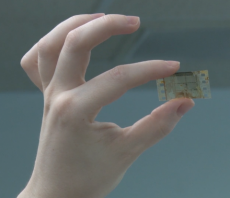 Through a combination of careful physical handling – flexing and touching the surface of each frame – and visual examination, we tested each sample for the following factors indicating decay:
Through a combination of careful physical handling – flexing and touching the surface of each frame – and visual examination, we tested each sample for the following factors indicating decay:
- brittleness or softness
- yellowing of the base
- fading or bleaching of the emulsion
- stickiness
- buckling
- presence of foreign matter, such as dirt, grease or oil, adhesive residue, or brown powder
We also counted the number of tears, folds, and broken sprocket holes.
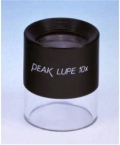 Using a measured loupe, we then calculated in square millimeters (mm2) how much of the image had disappeared due to decomposition.
Using a measured loupe, we then calculated in square millimeters (mm2) how much of the image had disappeared due to decomposition.
Finally, we sought to quantify how scratched each frame was. Using a measured loupe and a light source cast along the surface of the film, we counted the visible scratches along two imaginary baselines, one bisecting the frame horizontally and one bisecting the frame vertically. Estimating that each scratch covered about .05 mm2 of surface area, we then multiplied the number of horizontal and vertical scratches by .05 to calculate approximately how much surface area of the frame was scratched. This was done for both the base and emulsion sides of each frame.
Reflectance Transformation Imaging
As part of the visual inspection process, Katie Mullen, Preservation Coordinator at the Wisconsin Historical Society, photographed select frames using Reflectance Transformation Imaging (RTI).
Developed by Hewlett–Packard Labs, and promoted to the conservation community by Cultural Heritage Imaging, RTI is a computational photographic method that captures the surface shape and color of an object. Using a stationary digital camera, the object is photographed multiple times. For each photograph, light is projected from a different direction and bounced off of small, reflective spheres, which generates different highlights and shadows. The RTI rig is shown in the image below.
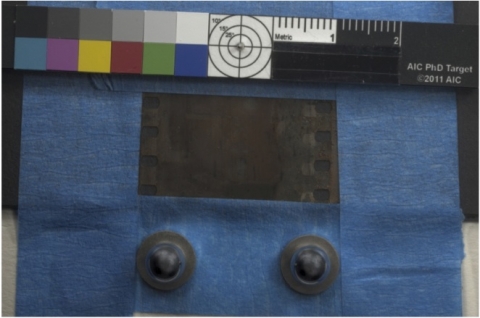
Using the RTI viewing software, the series of images is combined to create a three–dimensional, interactive image. By moving the “virtual” light, as shown in the images of one of our CN-2 samples below, the user can reveal and examine fine details of the photographed object’s surface.
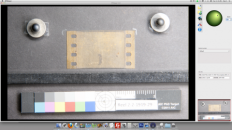
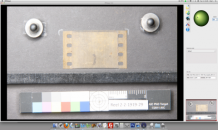
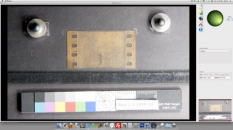
The RTI software also allows for the object’s surface shape and color attributes to be mathematically enhanced, which can reveal information not visible by empirical examination. In our case, as shown in the images below, these enhancements emphasized not only the presence of scratches and foreign matter on the frames, but also the density of the emulsion creating the image.
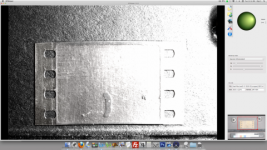
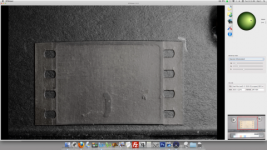
The visual inspection process was completed in March 2013 and the samples were then sent to the chemistry group for the accelerated aging trials.
